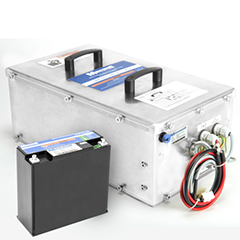As renewable energy adoption grows worldwide, major utilities increasingly rely on wind power to serve homes and businesses with emission-free, clean electricity. Because of this growing interest in cleaner energy sources, the wind industry is experiencing a period of significant growth worldwide, exceeding 500 gigawatts and employing more than 1.2 million people.
This growth has increased focus on issues like the equipment’s sensitivity to extreme environmental factors, subsequent power interruptions and revenue loss, increased maintenance, and maintenance-related safety risks.
To keep up with this growing demand, operators must continue to stay ahead of potential challenges. Like all power sources, wind turbines are vulnerable to harsh weather conditions and require fail-safe operating systems such as emergency pitch units, commonly referred to as EPUs, which help safely halt turbine operation. As a result, turbine operators and owners are increasingly depending on electrical-based pitch control systems to perform this function.
Traditional EPU (emergency power unit)
In periods of total power failure, the EPU is equipped with an emergency power supply to return the blades to a safe position and allow the turbine to shut down effectively. These systems have typically relied on batteries to perform this function. Because of batteries’ electrochemical nature, they are prone to faster deterioration, resulting in eventual failure in extremely hot or cold temperatures necessitating wind farm operators to replace them every two to four years. The result of this maintenance requirement is ultimately lost revenue to the wind farm operators.
When batteries fail, low-voltage alarms are sent to the wind farm control center where operators can view battery faults on a monitoring system. These periods of downtime are harmful to the wind farm’s production and, in turn, revenue generation. All components in a wind turbine must work reliably to maximize energy generation and profit. Wind farm owners/operators should consider a retrofit solution that seamlessly upgrades their battery-based EPUs, eliminating the need for frequent battery and/or charger replacements and minimizing the high maintenance costs and revenue losses that batteries inflict on their operations.



























